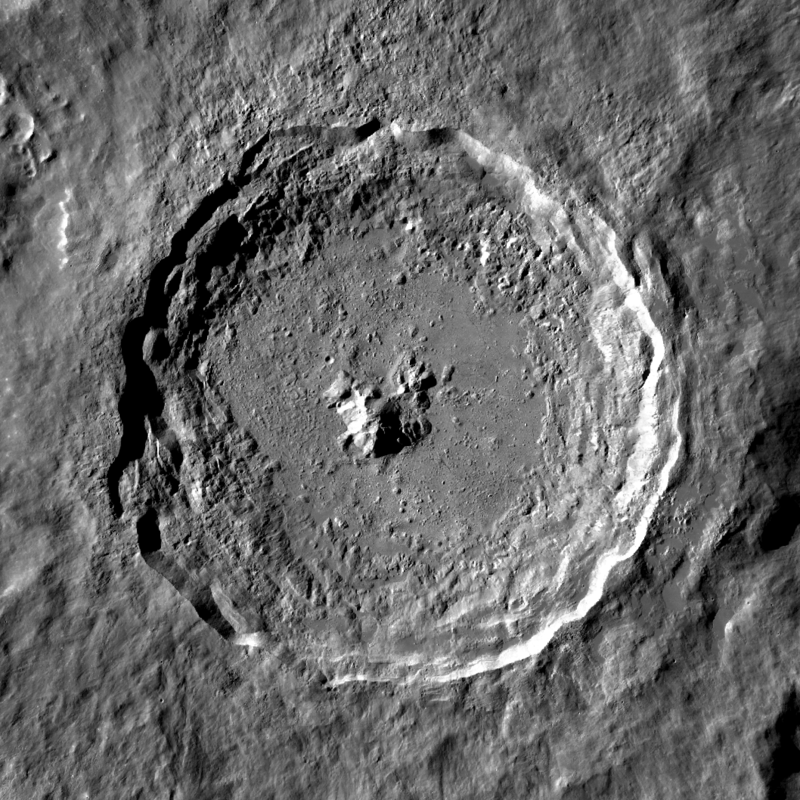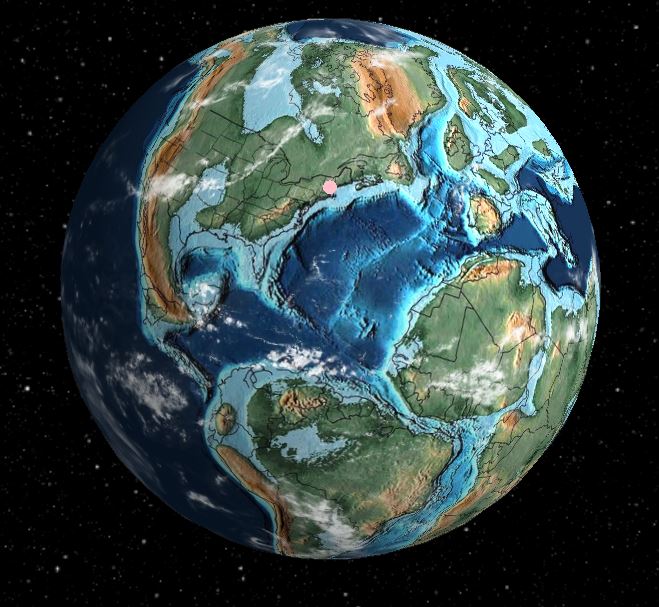
Anteros: Avenging Love Unrequited
It is the rare person indeed who goes through life knowing nothing of unrequited love's poignant anguish. Most people are quite familiar with the special pain engendered by having professions of ardent love elicit little more than a faint smile, an indifferent shrug or, worse yet, amused titters. After the rebuke, the timid lover retreats into isolation to nurse the grievous wound while the undeterred lover persists in the infatuation until realizing that neither eloquent entreaty nor earnest devotion will persuade the object of their affection to requite the offered love. As we all know, it either happens or it doesn't. When it doesn't, well, the spurned suitor tends to wander misty moors chanting lamentations to the cold and fruitless moon. (i.e. watches Dr Who reruns while being comforted by the knowledge that romance is for sissies, anyway.)
Although those down-in-the-mouth cognitive psychologists ascribe these intense emotions to the workings of the amygdala, hippocampus and other limbic system constructs, we sensible people know full well that Aphrodite's wicked son Eros is largely responsible for them. Known to most by his Roman name Cupid, Eros is said to wield a weapon more formidable even that Zeus' thunderbolts: the golden arrow. Anyone punctured by this gilded projectile will fall passionately in love with the next person they see. However, Eros also possesses a quiver of leaden arrows. Anyone shot with one of these lead-tipped bolts will develop a deep revulsion for the individual within immediate sight. It is Eros malicious practice to sometimes fire both a golden arrow at one subject and a lead arrow at the other, so that the former falls passionately in love with the latter who, in turn, can't stand the sight of the former. (It was Eros, after all, who induced Apollo to pursue Daphne while ensuring that Daphne couldn't abide the presence of Apollo.) So, unrequited love is merely an elemental mix-up between gold and lead.
While Eros is responsible for unrequited love, his less-well-known brother Anteros only purpose is to avenge the unrequited love. Almost identical to his brother in appearance except that he sports butterfly wings, Anteros also possesses quivers of arrows, both golden and leaden. He hardly uses them, however, unless he wishes to smite a person for mocking another for offering him/her unrequited love. He famously avenged the excruciating pain that the Athenian Meles inflicted on the metic* Timagoras who professed his ardent love for the former. Meles responded with mocking derision and encouraged Timagoaras to hurl himself off a cliff. After Timagoras did precisely that, Anteros fired a lead arrow into Meles as he stooped down to drink water from a pond. Meles became so repulsed at his own reflection that he threw himself off the same cliff where Timagoras had met his fate.
Eros and Anteros are two members of The Erotes, the collective name for Aphrodite's retinue of minor love deities. This assemblage includes Himeros ("fleeting love"), Pothos ("love for the absent"), Hedylogos ("sweet talk") and Hymenaios ("Bridal Hymn.") Every type of love, be it forlorn or requited, is personified by the Erotes who, arguably, are the most powerful entities governing the mythological Universe.
*Metic = foreign resident of Athens
THE SOUTHWORTH PLANETARIUM
207-780-4249 www.usm.maine.edu/planet
70 Falmouth Street Portland, Maine 04103
43.6667° N 70.2667° W
Altitude: 10 feet below sea level
Founded January 1970
Julian Date: 2459225.18
2020-2021: LXIX
THE DAILY ASTRONOMER
Monday, January 11, 2021
Exploratorium IV: Before and After Tycho's Formation
Part I: Before
Location
Moon (43° 18′ 36″ S, 11° 21′ 36″ W )

Time
108 million years ago
Well, this is a fine box of fruit, isn't it?
Well, this is a fine box of fruit, isn't it?
Our inaugural voyage brings us to a region of nearly perfect desolation. We survey our surroundings to behold a bleak grey terrain fiercely illuminated by a white-hot Sun in a star-adorned sky. Yes, we're on the moon, but not the moon of today. Instead, we are standing on luna firma 108 million years in the past. Specifically, we're on a spot along the moon's 43rd southern latitude. (On Earth, the corresponding latitude intersects Tasmania, a southern island state in Australia.) As you can probably tell from its appearance, we didn't choose a particularly distinct area. Or, at least it isn't particularly distinct now. We can see distant crater rims cast in a stark white luster over the shadowy terrain. Other smaller craters, some quite minuscule, pockmark the surface around us. However, in about 25 days from now, this spot we occupy shall become ground zero: the impact point of a massive asteroid that will form what modern humans call "Crater Tycho."
____________________________________________
CRATER TYCHO

This immense crater spans 86 miles and is nearly three miles deep. The central peaks extend approximately one mile above the surface. Those mountains are believed to have formed in a rebound event following the initial impact compression.
______________________________________________
We needn't worry, though. We'll be long gone prior to the impact. Our aim here today -or more than 100 million years ago- is to observe. What can we see and how much can we know? Also, what are the all important interconnections pertaining to Crater Tycho. that "moon navel" observers can readily see?
First, however, let's look at the sky! Bereft of any atmosphere, the moon's sky is beyond bedazzling! Though the Sun is above the horizon, the stars well away from it remain visible. In fact, let's do this:
Time
one week later
There. That's better. We probably should have started here. The Sun, which had been around the meridian (noon position) just set a day or two ago. The Sun remains above the horizon for just about two weeks due to the moon's slow rotation. (More on that in a moment.) We can now see the moon's oxymoronic sky: Brilliantly dark. However, we shouldn't bother trying to identify any constellations. None of them exist at the moment. Our solar system is on the far side of the galaxy relative to the position it will occupy in modern day. The solar system completes one orbit around the galaxy every 225 million years. Moreover, many stars that will adorn Earth's modern sky haven't even formed yet. Betelgeuse, for instance, will become an active star in about 99 million years. Though it may be bright, the sky is wholly unrecognizable.
We look at Earth to regain a sense of the familiar. However, even Earth seems a bit strange to us. Yes, Earth is perceptibly, but not dramatically larger (about 1.01 percent) in the moon's sky than it will be during the Apollo moon landings.
As the moon recedes from Earth at about 3.8 centimeters per year, the moon is 2,541 miles closer to Earth now than it will be in modern day. Of course, unless you're one of the twelve Apollo astronauts, you've never seen Earth from the moon and so have no standard of comparison. One consequence of this diminished distance pertains to rotation. The farther away the moon moves from Earth, the slower the rotation becomes. According to current estimates, the day's length increases by 0.0017 second per century. Consequently, the day is about 23.5 hours long now as opposed to the 24 hour modern day.
The moon's rotation is slightly faster as well, but by a lesser amount. The moon's rotation rate is directly related to its distance because its rotational and revolutionary period are equal. The rotation rate is slightly lower now than it will be in modern day, but the change is so slight that the moon's day is still more than 27 Earth days long, almost equal to the modern day 27.5 day length
So, in this instance, size doesn't really matter. What does, however, is Earth's appearance. The continents are a mess, at least from our perspective.

Fortunately, the exploratorium is well equipped with an abundance of anachronisms, such as telescopes available 108 million years in the past. Through them we observe a strange planet indeed. A substantial body of water separates the two immense land bodies that will be conjoined to form Africa. Scandanavian countries are in tatters while much of what will become the southeastern US is under water. In 19 million years from now, India will become detached from Gondwana. In 29 million years, the continent modern humans call Australia will separate from Antarctica. We are witnessing a brief moment in the slow but inexorable tectonic plate motions that will eventually arrange the continents as they appear in modern day. For now, though, the world looks profoundly different.
While we stand here admiring the scenery, we should be aware of the hefty boulder careening through space en route to this very spot. Though invisible now, the 5.5 - 6 mile wide asteroid will eventually appear in the sky. Initially, the sun's reflection will lend it a star-like appearance. However, as it approaches, it will grow to a disc-shape, its features still indistinct. As it nears the surface, the asteroid will accelerate, brighten and expand from our vantagepoint. Despite its rapid descent, it will still seem to be in slow motion. Unlike projectiles that collide with Earth, no frictional heating will precede the impact due to the lack of an atmosphere. In fact..
Time
18 days in the future
Here it comes and heavens it's casting quite a shadow.
Ok, let's dash!
Time
One minute later
Location
Earth
Welcome to the Cretaceous period!
Yes, the last of the three "dinosaur ages." Like our evolutionary forbearers, we're now nestled away within the underbush well away from our fierce and formidable foes of the clade dinosauria. Granted, were we to actually appear here now physically, dinosaurs would be the least of our concerns. The true challenge would be literally paradoxical. On day one at the Causality Violation Academy for Aspiring Time Travelers, pupils are warned about the perils of paradox: the dangers of encountering your ancestors or, worse, yourself. Well, we needn't be concerned about them. After all, the first primates are going to appear for at least the next 23 million years. However, all the particles comprising your body are loitering about. For instance, the same oxygen molecules that are involved in aerobic cellular respiration inside you right now are hanging about in the atmosphere or in the rocks or the water or somewhere. It is highly likely that a few of them will be whistling across our skin on arrival: the same molecules occupying two places simultaneously would prove so problematic that we don't know precisely what would transpire. Yes, all the component parts of your body are here, albeit in various forms scattered around the world.
Leaving that matter aside, we look up at the moon at -WOW!- see a dazzling flash of light. The asteroid we watched approaching the moon has just landed on its surface, releasing many megatons of energy. The impact that will gouge out Crater Tycho has lit up the moon and cast a flash over this dinosaur-plagued planet.
Amazingly, this impact is merely the beginning of our excursion.
Join us tomorrow for the aftermath.
To subscribe or unsubscribe from the Daily Astronomer: